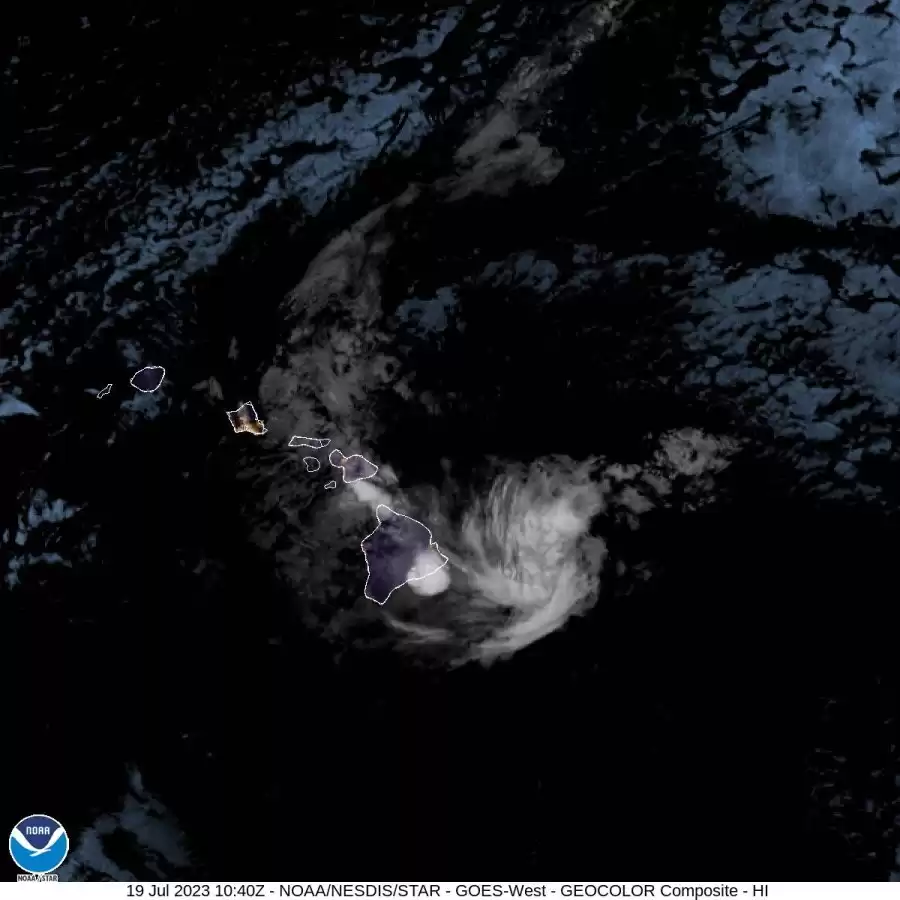Tropical Storm Calvin brings torrential rain to southern Hawaii
Tropical Storm Calvin approaches Hawaii, bringing heavy rain and strong winds.
On July 13, the National Hurricane Center issued a statement regarding the imminent or ongoing impact of Tropical Storm Calvin in Hawaii. The storm had passed south of Big Island, with maximum sustained winds of 50 mph, a significant decrease from its previous hurricane strength. Currently, Calvin was situated 140 miles south of Hilo and 309 miles southeast of Honolulu.
As a result, a tropical storm warning had been issued for Hawaii County on the Big Island, and officials urged residents to take cover. The National Hurricane Center noted that Calvin was moving westward at a speed of 20 mph, a motion expected to continue for the next few days. The storm's tropical-storm-force winds extended up to 140 miles from its center.
Furthermore, meteorologists predicted storm total rainfall amounts of 4-8 inches, with a possibility of maximum amounts reaching 10 inches. The most significant rainfall was expected along the windward slopes and southeast flank of the Big Island of Hawaii. This excessive rainfall could potentially lead to localized flash flooding and mudslides.
In addition to heavy rainfall, experts warned of life-threatening surf and rip currents caused by the swells from Calvin. These dangerous conditions posed a significant risk to individuals in the affected areas.
Calvin initially formed as a tropical depression off the southwestern coast of Mexico the previous Tuesday. Over the following two days, it gained strength, eventually reaching tropical storm and hurricane intensity.
In June, the National Weather Service's Climate Prediction Center announced the presence of an El Nino event, characterized by the warming of ocean surface waters. This phenomenon was expected to gradually strengthen during the Northern Hemisphere winter of 2023-24. Furthermore, the NOAA reported that June 2023 marked the hottest June on record, with ocean surface temperatures reaching a record high for the third consecutive month. Additionally, global sea ice levels hit a record low for June.
Overall, the impact of Tropical Storm Calvin in Hawaii and the presence of El Nino conditions highlight the ongoing challenges posed by extreme weather events and climate change. It is crucial for individuals and communities to stay informed, take necessary precautions, and adapt to these changing conditions to ensure safety and resilience.












Comments on Tropical Storm Calvin brings torrential rain to southern Hawaii